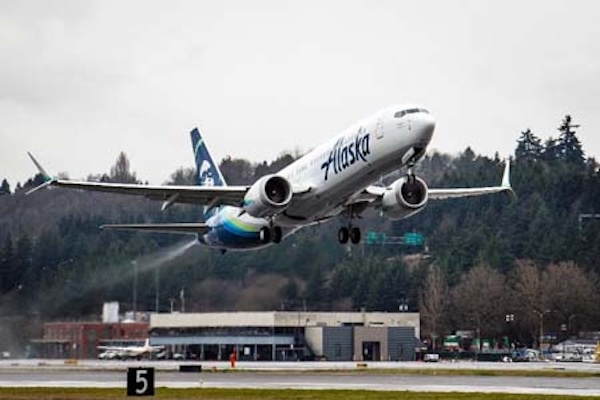Boeing has announced a significant adjustment to the production of its 737 aircraft in response to safety concerns. This decision follows an incident involving an Alaska Airlines flight, highlighting the need for improved safety practices.
Production Challenges Post-Incident
Boeing’s chief financial officer, Brian West, has confirmed that the production of the 737 aircraft will be deliberately slowed. The decision, described as a move to ‘get this right’, will see production constrained to below 38 units monthly, as set by regulatory limits.
This planned slowdown is expected to linger over the coming months. West remarked that the impact would be felt significantly in the first half of the year, with an expectation of higher rates in the latter half, contingent upon meeting Federal Aviation Administration (FAA) standards.
Financial Impact and Strategic Decisions
The decision to reduce production is expected to affect Boeing’s financial projections significantly. According to West, the reduction will influence revenue and cash flow, with free cash flow usage projected between $4 billion and $4.5 billion in the upcoming quarter.
West explained that the priority shift from speed to quality is aimed at addressing the lessons learned from the Alaska Airlines incident, reinforcing Boeing’s commitment to safety and quality improvements.
Regulatory and Safety Enhancements
The FAA’s role in overseeing production standards will be critical as Boeing endeavours to meet safety benchmarks. The agency’s assessments will guide the eventual increase in production to over 38 units monthly.
Boeing acknowledges the regulatory oversight as a crucial step in ensuring that the past focus on efficiency does not overshadow the paramount importance of safety.
West emphasised, “For years, we prioritised the movement of the airplane through the factory over getting it done right, and that’s got to change.”
Long-term Outlook for 737 Production
Boeing anticipates a positive shift in its 737 production strategy in the latter half of the year. This change is dependent on their ability to meet FAA requirements and address the safety challenges outlined in recent evaluations.
The company remains focused on establishing robust systems that prevent the recurrence of past safety oversights, potentially strengthening its market position in the long term.
Impact on Revenue and Market Dynamics
The production cutback is forecasted to have a tangible impact on Boeing’s financial outcomes. Reduced earnings are a realistic expectation in light of the increased focus on safety and quality assurances instead of quantity.
The aviation market is expected to experience ripple effects from these production changes, potentially influencing aircraft supply and airline operations globally.
Boeing’s commitment to overcoming these challenges may bolster its reputation in the industry, aligning with market expectations of transparency and responsibility.
Industry and Stakeholder Responses
Stakeholders within the aviation industry are closely monitoring Boeing’s response to the safety incident and its commitment to quality.
Market analysts suggest that while short-term financial impacts are inevitable, Boeing’s strategy could yield positive outcomes in brand trust and customer loyalty over time.
Future Prospects for Boeing
Boeing’s focus on safety is expected to lay the foundation for a more sustainable production approach. By prioritising safety over speed, the manufacturer aims to enhance its operational integrity and customer satisfaction.
Boeing’s strategic shift in 737 production highlights a crucial response to safety and quality demands, aiming to reinforce industry trust. The company’s decision to prioritize comprehensive safety checks over sheer production numbers underscores its commitment to delivering safer, higher-quality aircraft.

